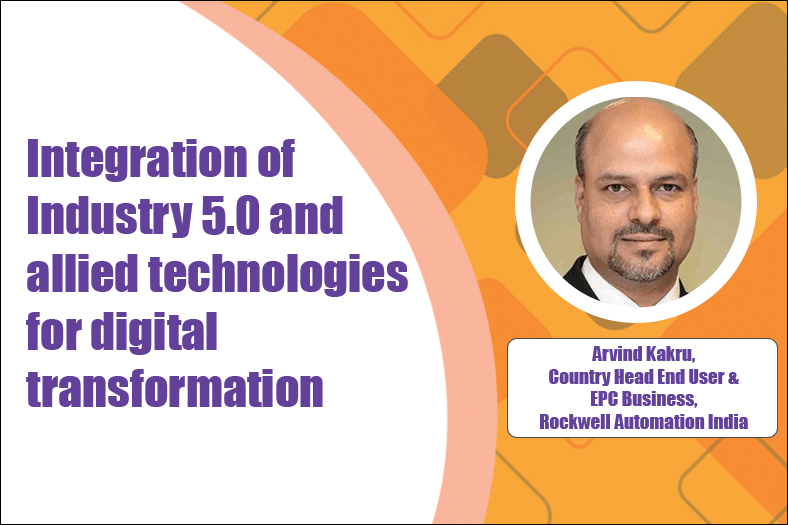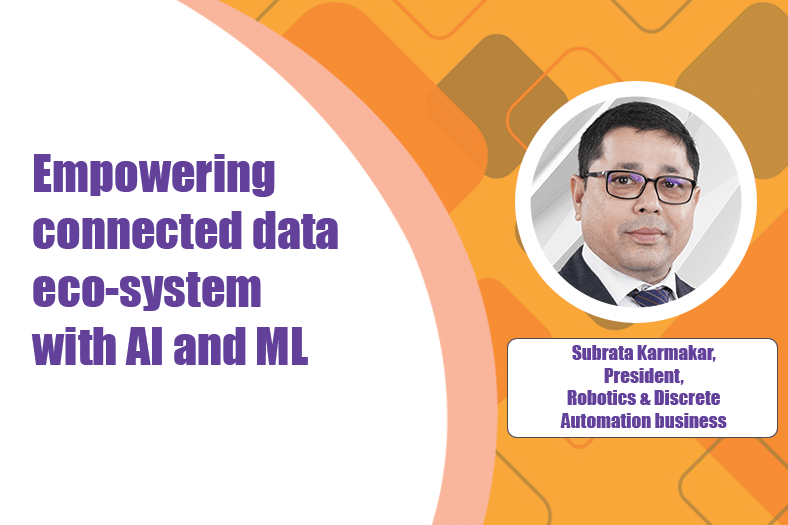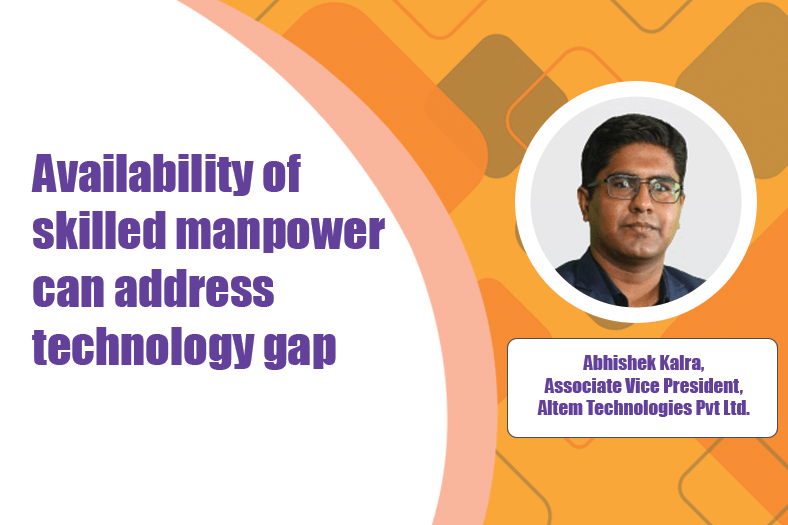Integration of Industry 5.0 for better and increased manufacturing
By OEM Update Editorial June 9, 2021 1:38 pm IST
Adoption of latest technologies can reap huge benefits for the SMEs and MSMEs to excel further in carving a bright roadway ahead.
Arvind Kakru, Country Head End User & EPC Business, Rockwell Automation India, in an interview with OEM Update, talks about carving a road towards digital transition with Industry 4.0 and Industry 5.0
Indian industries have embraced Industry 4.0 and its technologies to carve a bright future of Indian manufacturing. With this level of acceptance, how ready are we to accept Industry 5.0?
India has been at forefront of digital adoption with the advantage of larger eco-system drivers and better propagation of digital technologies, solutions and use cases. Industry 5.0 would mean the next logical step in that direction and consolidating the gains of past few years. There are already some industries and applications where humans are already working alongside robots, cobots and smart machines; warehouse and automotive applications are some good examples of that. As machines get more connected and emphasis is to better utilise human skills, Industry 5.0 would help utilise the best of cyber and physical worlds to drive better collaborative operations. Industry 5.0 directionally will drive mass customisation of customer experience through digital transformation.
With the advent of 3D Printing, AI, robotics, connected data enterprise, what are the major areas where the industry witnessed transformations and business prospects?
These all technologies are major drivers of digital transformation and have made tremendous impact for the betterment of industry and society. The human experience has got elevated by several notches due to advent of AI, delivering better customer experience for several products and services. Smart manufacturing is another great beneficiary of these technologies, driving better efficiencies, visibility, uptime, safety, inventory management, supply chain operation, etc. 3D Printing has transformed industries with great dependence on building protypes delivering complex, cheaper and rare products for varied industries like capital goods, metal processing, consumer electronics, automotive, medical, aerospace, etc. Robotics has been making huge impact not only in traditional manufacturing like warehouse automation, automotive, etc. but also expanding rapidly in consumer driven applications.
How is AI, 3D printing, machine learning and robotics bridging the manufacturing technology gap in Indian industries?The adoption of all of these technologies is not so widespread across all sectors of the manufacturing industry. However there has been significant transformation in certain parts of the industry with companies developing, adopting, and integrating these technologies and solutions into their processes and products – including electronics, heavy electricals, automobile, and agriculture. The adoption has been far more impactful in areas where there is need … to increase products and options, for shorter time to market, to innovate and manage global supply networks, of constant competitive evolution, of changing customer preferences, of technologically induced influences and for better cost dynamics.
What are the challenges for the SME and MSME sector in adopting factory automation, digitization and robotics for efficient manufacturing processes?
Some of the key focus areas for them would be quality, efficiency, traceability and collaboration. Some expected challenges would be initial capital cost, variable market demand, lack of vision, flexible manufacturing, management readiness, cultural change, skilling and reskilling, standardisation, efficiency, quality and automated supply chain. However, by adopting these technologies, SMEs can drive lower cost, market growth, real-time operational visibility, optimised inventories, better utilisations of machinery and workforce and so on. In short, they can reap huge benefits and be the game changers.
Collaboration of humans and machines (robots and cobots) are expected to play a key role in carving India’s future. How do you see India’s future with Industry 5.0?
India is at the cusp of Industry 5.0, as humans and robots start to work side-by-side and even together. In today’s rapidly changing marketplace, companies have to be on top of their game by continuously innovating their products or modernising their production processes. Industry 5.0 is starting to take shape in Indian industry and this collaboration will only continue to advance. The future holds infinite possibilities for human-machine collaboration.
Cookie Consent
We use cookies to personalize your experience. By continuing to visit this website you agree to our Terms & Conditions, Privacy Policy and Cookie Policy.









